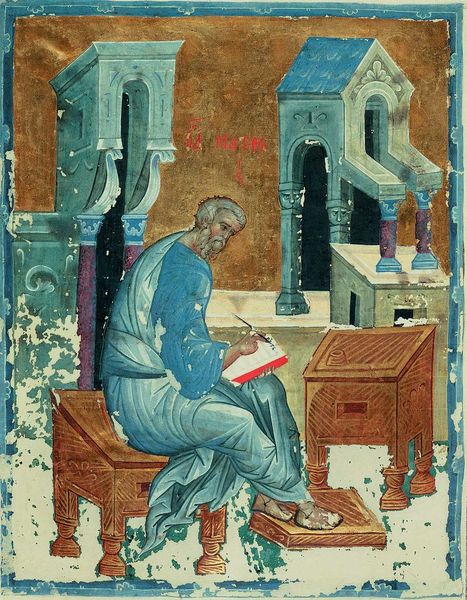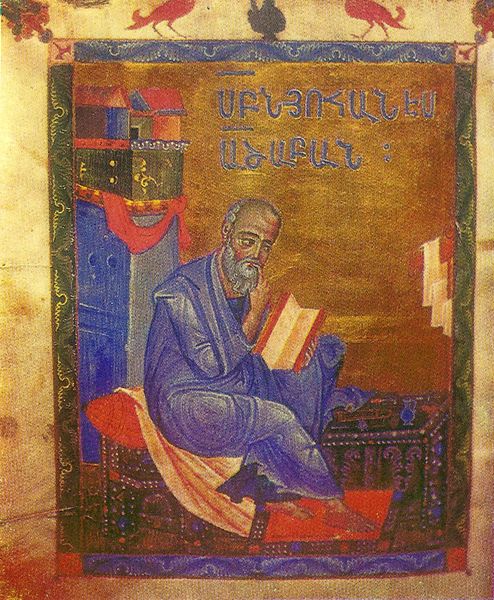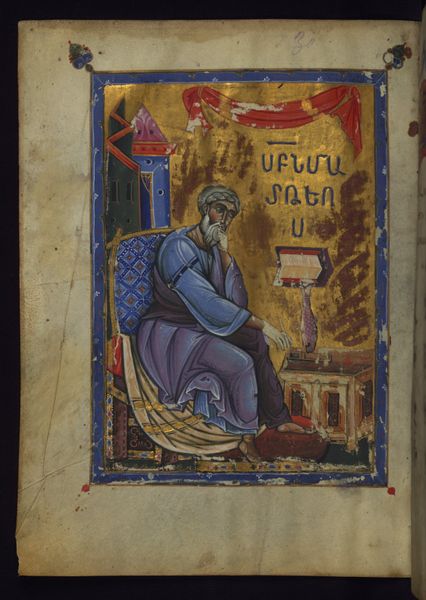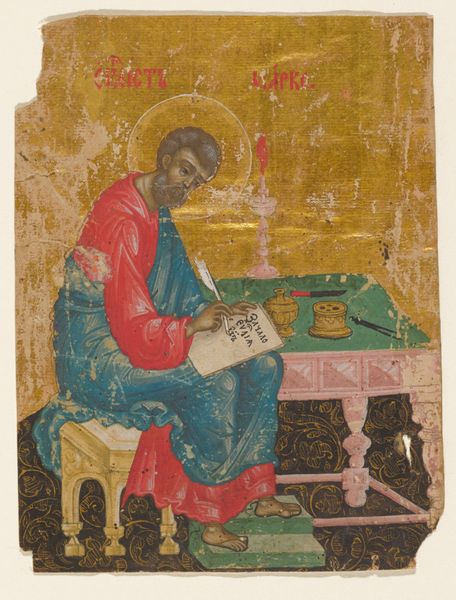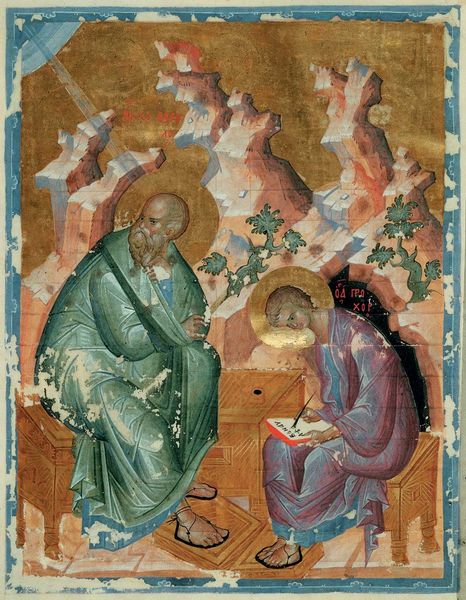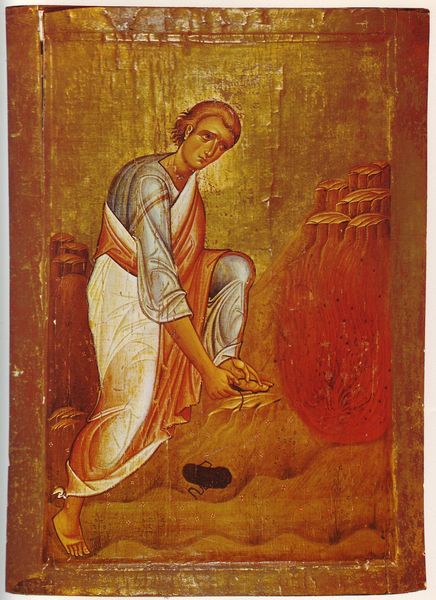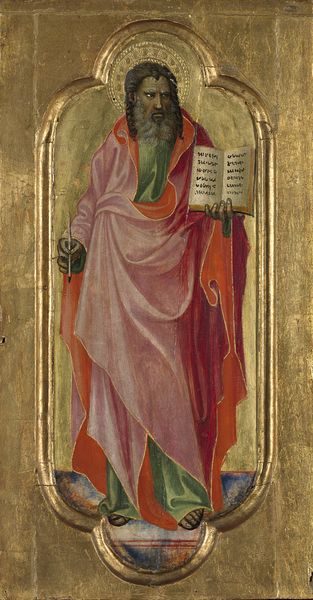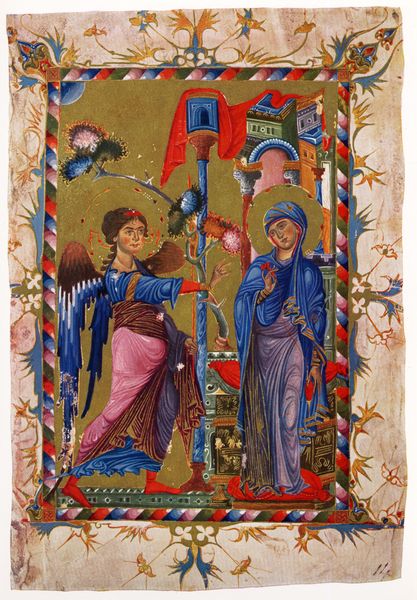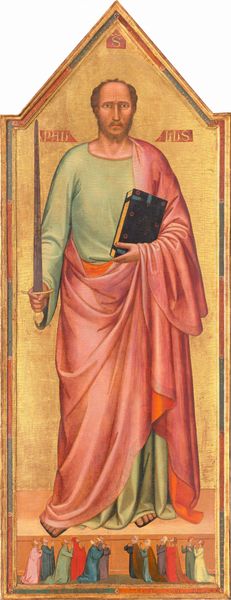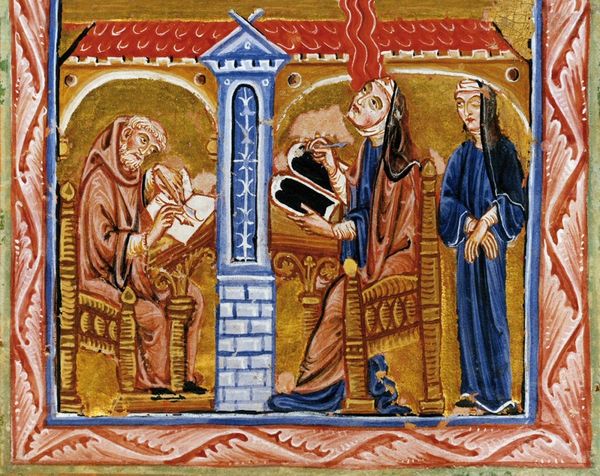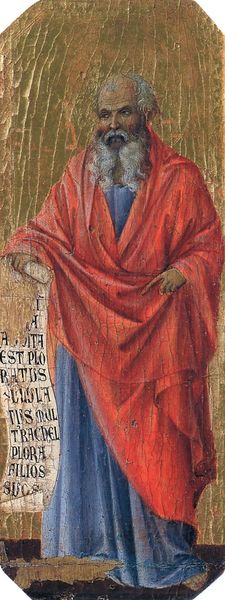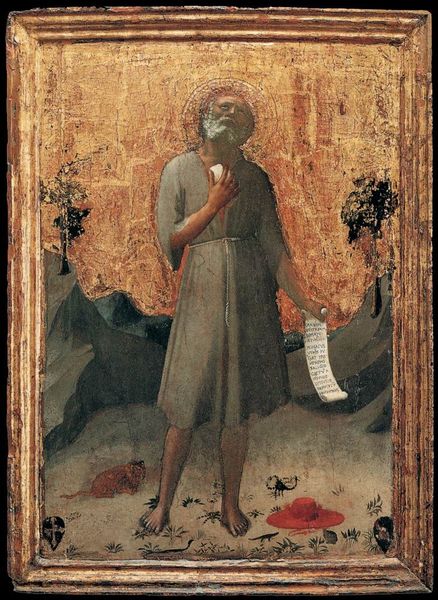
tempera, painting
#
portrait
#
byzantine-art
#
medieval
#
narrative-art
#
tempera
#
painting
#
figuration
#
mural art
#
handmade artwork painting
#
oil painting
#
naive art
#
christianity
#
history-painting
#
christ
Copyright: Public domain
This image of St. Luke the Evangelist was made by Andrei Rublev in Russia, likely in the late 14th or early 15th century. Rublev was a master of egg tempera, a demanding process that involved grinding dry pigments and mixing them with egg yolk. This mixture was then carefully applied to a prepared wooden panel in thin, overlapping layers. Look closely and you can see how the gold leaf shimmers and catches the light, and how the deep blues and reds give the scene a sense of otherworldly calm. Icon painting was far more than just a job for Rublev. It was a sacred calling. Each stage of production, from selecting the wood to applying the final coat of varnish, was undertaken with prayer and fasting. This level of devotion and skill was crucial in creating images believed to be windows into the divine. The value of materials, the labor involved, and the social context of this icon are all essential to its meaning. By understanding these aspects, we can appreciate the full depth and complexity of Rublev's art, moving beyond simple aesthetic appreciation to a deeper understanding of its cultural and spiritual significance.
Comments
No comments
Be the first to comment and join the conversation on the ultimate creative platform.
